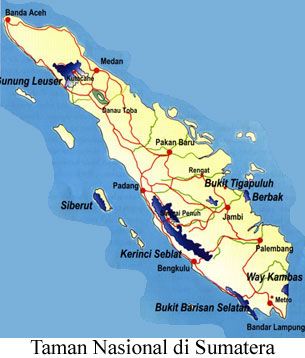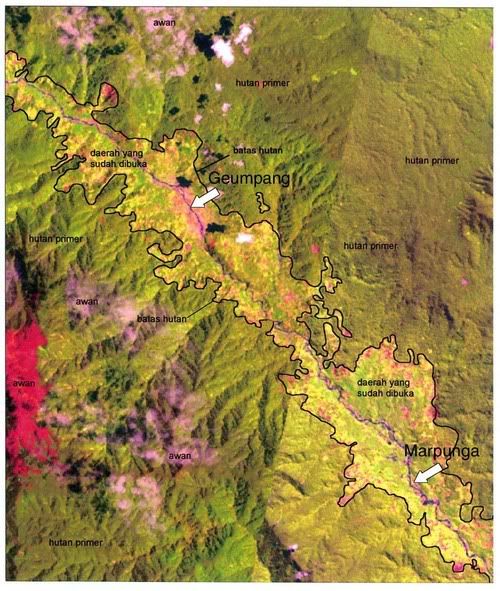The Needs of Integrated Knowledge System in Implementing and Designing Sustainable Water Management In Indonesia
Background
How would it be if a dressmaker makes a dress without pattern? The dress might not look good and perhaps it will not fit with the model. And, off course, everything does not work as what the dressmaker wants.
That is why a pattern is a must!
In the same way, philosophy of pattern is also applicable to water management. One needs to design the water system first based on the condition and then correlate it with sufficient knowledge.
In Indonesia, actually, there are many institutions do researches related to water subject. The topics are varies greatly, which talk about water resources, water engineering, water policy, and other relevant subject.
Lembaga Ilmu Pengetahuan Indonesia (LIPI) or Indonesia Science Research Institution, Badan Pengkajian dan Penerapan Teknologi (BPPT) or Institution for Technology Development and Implementation, and Badan Perencanaan Pembangunan Nasional (Bappenas), or National Development Planning Institution, are some of main institutions in Indonesia that held water researches. They held their own research based on the needs and the trends of world water technology.
Each institution developed its own expertise as it was a whole subject itself. And, actually, the quality of the researches is being recognized internationally. They produce quite hi-tech and sophisticated research for a country like Indonesia.
Unfortunately, most of these researches do not apply in Indonesia water management as an integrated system. They run separately. One water research has no connection to other relevant water research. Otherwise, government doesn’t really give enough attention to merge and make a linkage between one research and another.
And most of these researches did not fit the real condition and other water system components. The water policy did not support water technology researches and vice versa. Why?
Analysis
If we talk about water management, we talk about scientific and socio aspects of it. Water, it has scientific dimension, where water is a commodity that we can develop and renew whenever scarcity happens. That is why scientific research is necessary for water management.
But, to see water as a basic need of human being means that we have to admit that water also has its socio dimension. Water is a commodity that needs regulation and policy in order to make all people consume water equally.
So, It supposed that science research and policy research have a simultaneous correlation each other. Because, both of them are one package of a water management if a country intend to maintain good governance in this field.
In order to do that, there should be a systematic mechanism, which makes researches in water management subject correlate each other. This mechanism should be the bridge that makes the knowledge behind those researches became an useful aspects in Indonesia water management.
What kind of mechanism?
Researches in water management should be arranged in a model system. This model is just like a method that makes knowledge behind a research connected another relevant researches. So, these researches will come to the same problem solving in water management.
This model keeps all researches in water management on the same track, so probably it makes easier for Indonesia to achieve its water management goal.
Factors Affecting Possible Development and Possible Solutions
Both the research institution in water scientific researches and policy research are generally did the good work. So, it is not a problem on how to increase the quality, but it is more important to match them each other.
In terms of make the correct modelling for this water management, Indonesia government need to rearrange water research system. All of government research bodies should run an integrated research based on Indonesia water management goal.
Recommendations
There should be a systematic and integrated system in bridging the scientific and policy aspects in order to maintain sustainable water management. A modelling, which regulate the implementation of research in water subject and the government policy in water should be apply, so scientific aspects of water management meet the government’s “how to do” to conclude a policy. With this modelling, there is a synergy between reality, research, and political will of the country.
taken from Collaborative Platform UNESCO-IHE website
References
Bappenas website, http://www.bappenas.go.id/
IRC website, http://www.irc.nl/
BPPT website, http://www.bppt.go.id/
How would it be if a dressmaker makes a dress without pattern? The dress might not look good and perhaps it will not fit with the model. And, off course, everything does not work as what the dressmaker wants.
That is why a pattern is a must!
In the same way, philosophy of pattern is also applicable to water management. One needs to design the water system first based on the condition and then correlate it with sufficient knowledge.
In Indonesia, actually, there are many institutions do researches related to water subject. The topics are varies greatly, which talk about water resources, water engineering, water policy, and other relevant subject.
Lembaga Ilmu Pengetahuan Indonesia (LIPI) or Indonesia Science Research Institution, Badan Pengkajian dan Penerapan Teknologi (BPPT) or Institution for Technology Development and Implementation, and Badan Perencanaan Pembangunan Nasional (Bappenas), or National Development Planning Institution, are some of main institutions in Indonesia that held water researches. They held their own research based on the needs and the trends of world water technology.
Each institution developed its own expertise as it was a whole subject itself. And, actually, the quality of the researches is being recognized internationally. They produce quite hi-tech and sophisticated research for a country like Indonesia.
Unfortunately, most of these researches do not apply in Indonesia water management as an integrated system. They run separately. One water research has no connection to other relevant water research. Otherwise, government doesn’t really give enough attention to merge and make a linkage between one research and another.
And most of these researches did not fit the real condition and other water system components. The water policy did not support water technology researches and vice versa. Why?
Analysis
If we talk about water management, we talk about scientific and socio aspects of it. Water, it has scientific dimension, where water is a commodity that we can develop and renew whenever scarcity happens. That is why scientific research is necessary for water management.
But, to see water as a basic need of human being means that we have to admit that water also has its socio dimension. Water is a commodity that needs regulation and policy in order to make all people consume water equally.
So, It supposed that science research and policy research have a simultaneous correlation each other. Because, both of them are one package of a water management if a country intend to maintain good governance in this field.
In order to do that, there should be a systematic mechanism, which makes researches in water management subject correlate each other. This mechanism should be the bridge that makes the knowledge behind those researches became an useful aspects in Indonesia water management.
What kind of mechanism?
Researches in water management should be arranged in a model system. This model is just like a method that makes knowledge behind a research connected another relevant researches. So, these researches will come to the same problem solving in water management.
This model keeps all researches in water management on the same track, so probably it makes easier for Indonesia to achieve its water management goal.
Factors Affecting Possible Development and Possible Solutions
Both the research institution in water scientific researches and policy research are generally did the good work. So, it is not a problem on how to increase the quality, but it is more important to match them each other.
In terms of make the correct modelling for this water management, Indonesia government need to rearrange water research system. All of government research bodies should run an integrated research based on Indonesia water management goal.
Recommendations
There should be a systematic and integrated system in bridging the scientific and policy aspects in order to maintain sustainable water management. A modelling, which regulate the implementation of research in water subject and the government policy in water should be apply, so scientific aspects of water management meet the government’s “how to do” to conclude a policy. With this modelling, there is a synergy between reality, research, and political will of the country.
taken from Collaborative Platform UNESCO-IHE website
References
Bappenas website, http://www.bappenas.go.id/
IRC website, http://www.irc.nl/
BPPT website, http://www.bppt.go.id/




